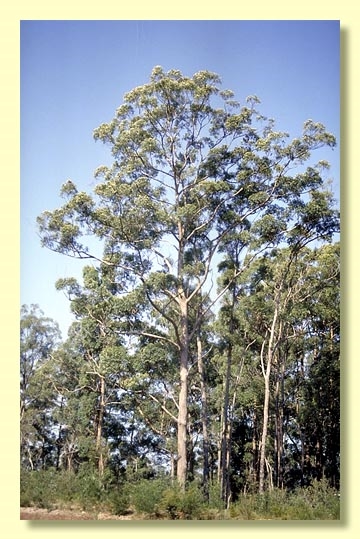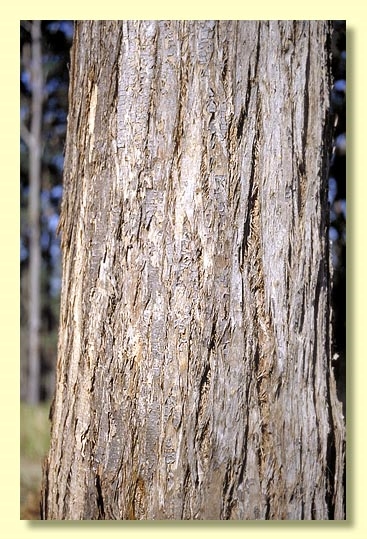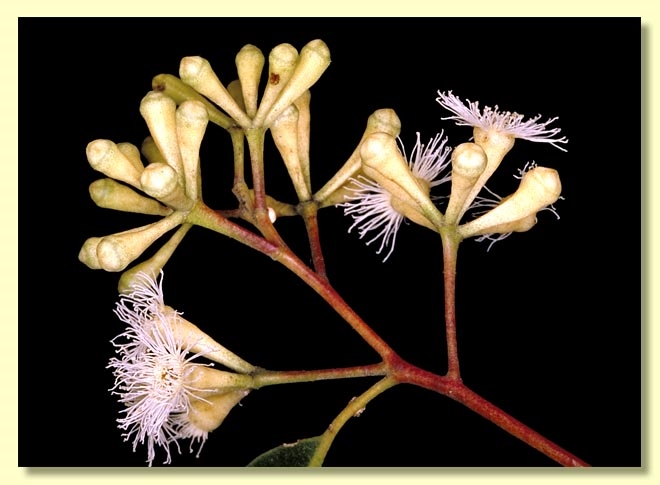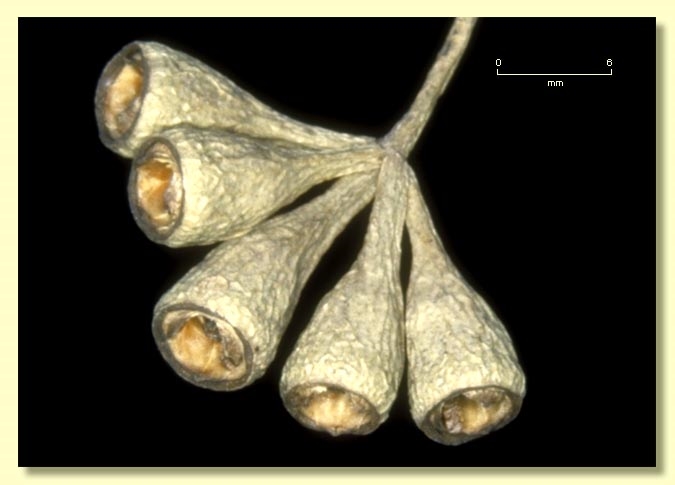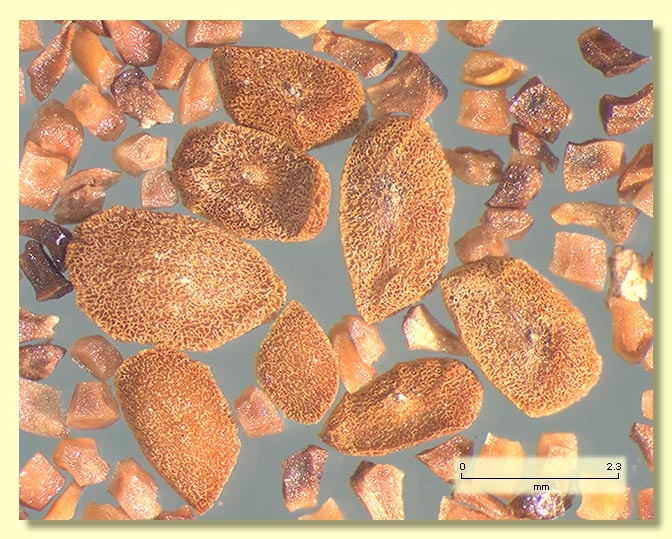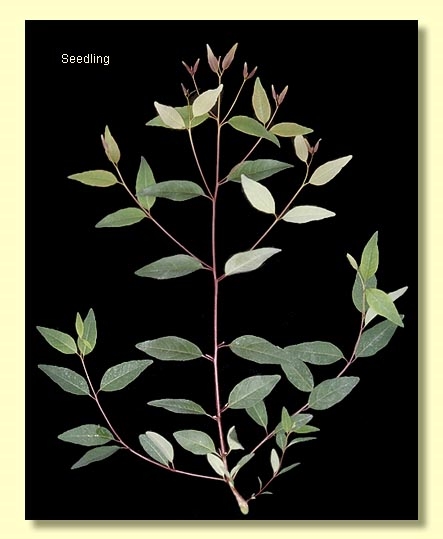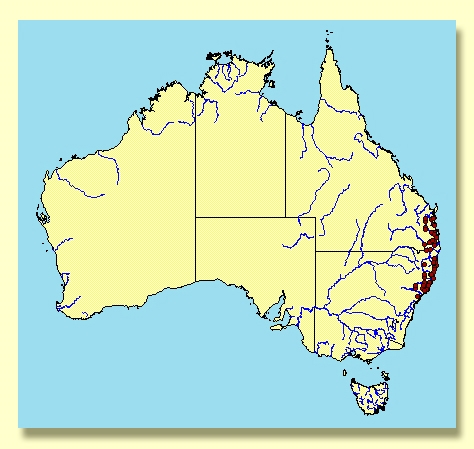Euclid - Online edition
Eucalyptus microcorys
Eucalyptus | Alveolata
Bark rough to small branches, softly stringy or fibrous, brown-grey to red-brown.
Juvenile growth (coppice or field seedlings to 50 cm): stem square or rounded in cross-section; juvenile leaves always petiolate, opposite for 4 to 6 pairs then alternate, ovate, 4–11 cm long, 1.5–5 cm wide, base tapering to petiole, discolorous, thin, dull, green.
Adult leaves alternate, petiole 1–1.5 cm long; blade lanceolate to ovate or slightly falcate, 6–15 cm long, 1.5–3.5 cm wide, flat or undulate, base tapering to petiole, discolorous, glossy, green, side-veins greater than 45° to midrib, moderately to densely reticulate, intramarginal vein parallel to and remote from margin, oil glands mostly island.
Inflorescence terminal compound or sometimes compound in subterminal axils, peduncles 0.4–1.8 cm long, buds 7 or 9, pedicellate, pedicels 0.4–0.8 cm long. Mature buds clavate (0.3–0.5 cm long, 0.25–0.3 cm wide), yellow, no operculum scar apparent but 4 sepals shed very eary, inner or only operculum rounded with 4 suture lines forming a cross, stamens arranged in four clusters, inflexed, with outer staminodes, anthers cuboid to reniform or cordate, versatile, dorsifixed, dehiscence slits oblique, non-confluent, style short, stigma mop-like, locules 3 or 4, the placentae each with 4 vertical ovule rows. Flowers white to lemon.
Fruit pedicellate, pedicels 0.2–0.7 cm long, obconical, 0.5–0.9 cm long, 0.5–0.6 cm wide, disc descending or level or obscure, valves 3 or 4, near rim level or slightly exserted.
Seeds yellow-brown to brown, 1.5–3 mm long, elliptical to ovoid and flattened, dorsal surface smooth or shallowly and irregularly honeycombed, hilum ventral.
Cultivated seedlings (measured at ca node 10): cotyledons reniform; stems square in cross-section; leaves always petiolate, opposite for 5 or 6 nodes then alternate, ovate, 4–8.5 cm long, 1.5–3.5 cm wide, base tapering, apex pointed, discolorous, dull, dark green above, paler green beneath.
Flowering has been recorded in January, August, September, October and November.
An important forest tree producing very strong and durable timber used for heavy engineering construction, railway sleepers, poles, crossarms, sills, flooring, decking.
A medium-sized to tall tree occurring from near Cooranbong in north coastal New South Wales north to Fraser Island and west to Toowoomba in Queensland. It is not closely related to any other species and is distinguished by the red-brown, rough bark to the small branchlets, discolorous glossy green leaves, terminally clustered inflorescences, inner operculum with sutures, and stamens in four bundles. Anthers are reniform with non-confluent slits and the yellow-brown seeds have a "mottled", honey-combed, dorsal surface with both smooth and reticulate patches. In bark colour it could be confused with E. planchoniana which grows on much poorer soils and has dull, bluish, falcate leaves, and the largest buds and fruit in eastern Australia.
Eucalyptus microcorys is the sole species in Eucalyptus subgenus Alveolata because of its unusual combination of characters. E. microcorys may superficially be confused with another tall tree species of wetter eucalypt forests, E. acmenoides, which also has extensive stringy fibrous brown rough bark and discolorous adult leaves, but differs from E. microcorys in having ovules in only 2 rows on the placentae, seeds angular-pyramidal and smooth, and in never forming the deciduous calyx lobes found in E. microcorys.

